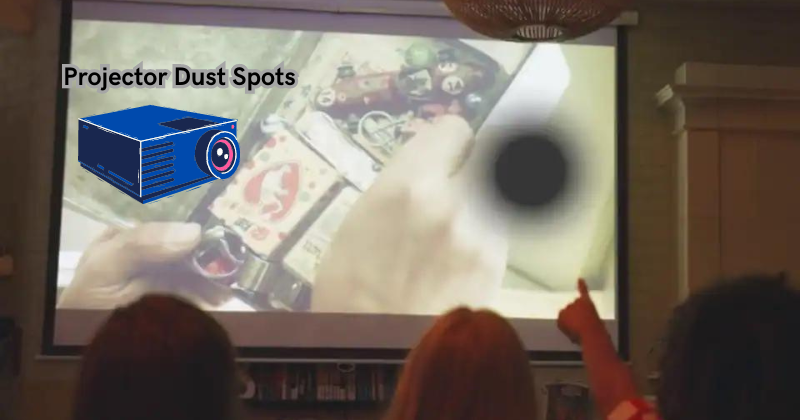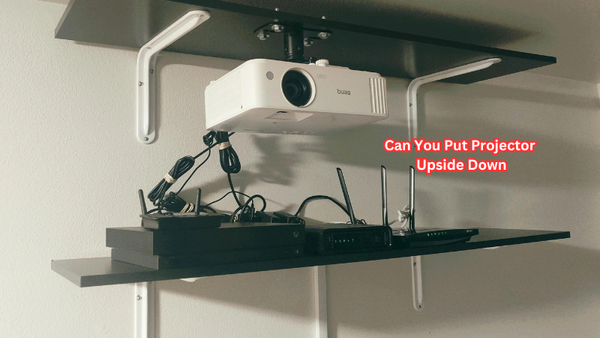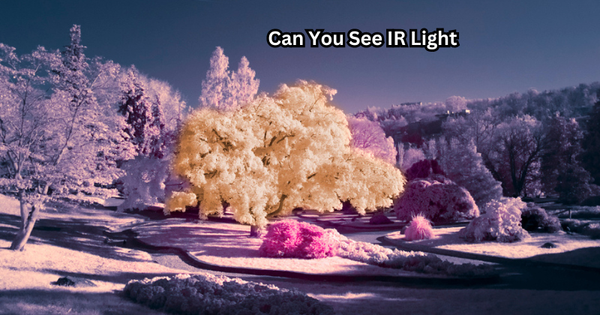Projector dust spots are the silent saboteurs of visual presentations, stealthily infiltrating the inner workings of projectors and casting imperfections on projected images. These seemingly innocuous particles can accumulate over time, creating blemishes that disrupt the clarity and impact of the projected content.
Whether it's a crucial business presentation or a cozy movie night, these elusive dust spots make their presence known, particularly in darker scenes or uniform backgrounds, detracting from the overall viewing experience.
Recognizing the implications of these tiny intruders and learning how to address them effectively is essential for maintaining pristine projection quality and ensuring captivating visual experiences that leave a lasting impression.
Why Is It Essential To Address Projector Dark Spots?
Projector dust spots may seem minor, but their impact can be significant. These tiny particles can cause dark spots or blemishes on projected images, which can distract viewers and diminish the overall quality of the visual presentation.
This is especially problematic for business presentations, where professionalism and attention to detail are crucial. Projector dark spot is also a common issue in home theaters, which can negatively affect movie enthusiasts' viewing experience.
Moreover, many projectors are used in dark environments, such as conference rooms or home theaters, where the contrast between light and dark areas is more noticeable. This makes dust spots even more apparent and can greatly reduce the impact of the projected image.
In addition to aesthetic concerns, dust spots can also affect the functionality of projectors. Accumulated dust can block air vents, causing overheating and potentially damaging internal components. It's essential to regularly clean and maintain projectors to ensure their longevity and optimal performance. Dust particles can also affect the projector's focus, resulting in blurry images that are difficult to view.
Causes of Projector Dust Spots
Dust spots on projectors can be caused by various factors, including the environment in which the projector is used and how it is handled and maintained. Here are some common causes of projector dust spots:
Lens or LCD Dust:
This is the most common cause of projector dust spots. Dust particles can enter through gaps in the lens or accumulate on LCD panels, resulting in visible blemishes on projected images. The projector lens and LCD should be regularly cleaned to prevent dust buildup. If the lens is dirty, then the projector image can be affected. And image quality will be poor.
A broken LCD screen is also the cause of dust spots. If a projector's LCD screen is damaged or broken, it will allow dust particles to enter and scatter on the projected images. Burnt polarizing film glass, a common issue with LCD projectors, can also result in dark spots on projected images. From the outside, dirty exterior lens particles can come in and cause spots.
Dust On The Internal Components:
As projectors have various moving parts, dust can easily enter through gaps and accumulate on internal components, resulting in dark spots on projected images. This type of dust accumulation requires professional cleaning to avoid potential damage to the projector's delicate inner workings.
Defective DMD Chip:
The Digital Micromirror Device (DMD) chip is an essential component of projectors that controls the projection of light. A defective DMD chip can cause dust spots to appear on projected images. This issue may require professional repair or replacement. Dark spots or projector burn mark on the DMD chip can also be caused by excessive heat or exposure to direct sunlight.
Overheating:
As mentioned earlier, dust buildup can block air vents and cause projectors to overheat. This not only affects the functionality of the projector but also increases the risk of damaging internal components. It's essential to keep projectors in well-ventilated areas and regularly clean air vents to prevent overheating.
Mishandling or Improper Storage:
Haphazard handling of projectors or improper storage can also lead to dust particles entering the internal components and causing dark spots on projected images. It's essential to store projectors in a clean, dry, and dust-free environment.
Fading Or Aging Of The Projector Lamp:
As projector lamps age, they can develop dark spots or blemishes that affect the quality of projected images. Regularly replacing the projector lamp can help avoid this issue. Projector screen dust spots can also be caused by using a dirty or damaged projector screen.
How To Address Projector Dust Spots
Now that we understand the importance of addressing projector dust spots, let's look at some ways to effectively remove them:
Clean the Lens:
Regularly cleaning the projector lens with a microfiber cloth and lens cleaner can help remove accumulated dust particles. Light path system check and lens alignment can also improve the overall image quality.
Lens cleaning solution must be compatible with lens glass. It's essential to turn off the projector and let it cool down before cleaning the lens. Improper cleaning can damage the lens, resulting in permanent dark spots.
Use a Compressed Air Can:
Compressed air cans can help remove dust from hard-to-reach areas, such as air vents and internal components. However, it's crucial to use compressed air carefully, as excessive force or improper handling can damage fragile internal parts.
Clean or Replace the Projector Fan:
Projector fans are essential for keeping the internal components cool and preventing dust buildup. However, if the fan is dirty or damaged, it can circulate dust particles within the projector. Regularly cleaning or replacing the fan can help prevent this issue.
Replace Faulty DMD Chip:
If a defective DMD chip is causing dark spots on projected images, it may need to be replaced by a professional technician. Attempting to replace the DMD chip yourself can cause further damage and should only be done by a qualified individual.
Professional Cleaning:
For extensive dust buildup or internal component cleaning, it's best to seek professional help. Trained technicians have the necessary tools and expertise to clean projectors effectively without causing any damage.
Replace Old Projector Bulb:
Regularly replacing old projector lamps can help prevent dark spots and maintain optimal image quality. It's essential to use high-quality replacement lamps from reputable sources. Projector screens should also be regularly cleaned to prevent dust spots on images. Better lamps give you better projector images.
By addressing the causes of projector dust spots and implementing proper maintenance, you can ensure your projectors continue to deliver high-quality images for a long time. Remember to regularly clean and maintain your projectors to avoid potential issues and enjoy optimal performance.
How to Prevent Projector Dust Spots
Prevention is always better than cure. Here are some tips to help prevent projector dust spots:
- Properly Store Projectors: Store projectors in a clean, dry, and dust-free environment. Avoid storing them in areas with high humidity or where they will be exposed to direct sunlight.
- Regular Cleaning: Regularly clean the exterior of the projector using a soft cloth or duster. Keep the air vents and fan clean to prevent dust buildup.
- Replace Projector Lamps: Regularly replace old projector lamps to avoid dark spots caused by aging or burnt-out lamps.
- Use Quality Replacement Parts: When replacing parts, such as projectors screens or fans, use high-quality replacement parts from reputable sources.
- Schedule Professional Maintenance: It's essential to schedule regular professional maintenance for projectors, especially if they are used frequently. This can help prevent dust buildup and extend the lifespan of your projector.
By implementing these prevention measures, you can significantly reduce the risk of projector dust spots and ensure optimal image quality.
FAQs
Why is my projector showing dots?
Your projector may be showing dust spots due to accumulated dust particles on the lens or internal components. It's essential to clean and maintain your projector regularly to prevent this issue. If cleaning does not help, there may be a more significant underlying issue that requires professional repair.
Can I use any cleaning solution to clean my projector lens?
No, it's crucial to use a cleaning solution specifically designed for projector lenses. Using the wrong solution can cause damage to the lens, resulting in permanent dark spots.
How do I get rid of the yellow spots on my projector?
Yellow spots on projectors can be caused by a variety of factors, including dust buildup or aging projector lamps. Cleaning the lens and replacing old lamps can help remove these spots. If the issue persists, it's best to seek professional help for further diagnosis and repair.
Is vinegar used to clean the projector lens?
No, vinegar is not recommended for cleaning projector lenses as it can damage the lens coating. It's best to use a cleaning solution specifically designed for projector lenses.
Conclusion
In conclusion, the battle against projector dust spots is a critical endeavor for anyone seeking to uphold the integrity of visual presentations and cinematic experiences.
By understanding the causes, identifying the symptoms, and implementing preventive measures, individuals can mitigate the impact of these tiny intruders on projected images. Furthermore, proactive maintenance and remediation strategies play a pivotal role in preserving the pristine quality of projected content.
Whether through regular cleaning routines, environmental controls, or professional servicing, addressing projector dust spots is essential for ensuring consistently captivating visual displays.
Embracing these measures not only enhances the overall viewing experience but also underscores a commitment to delivering high-quality presentations and immersive cinematic journeys that captivate audiences and leave a lasting impression.





